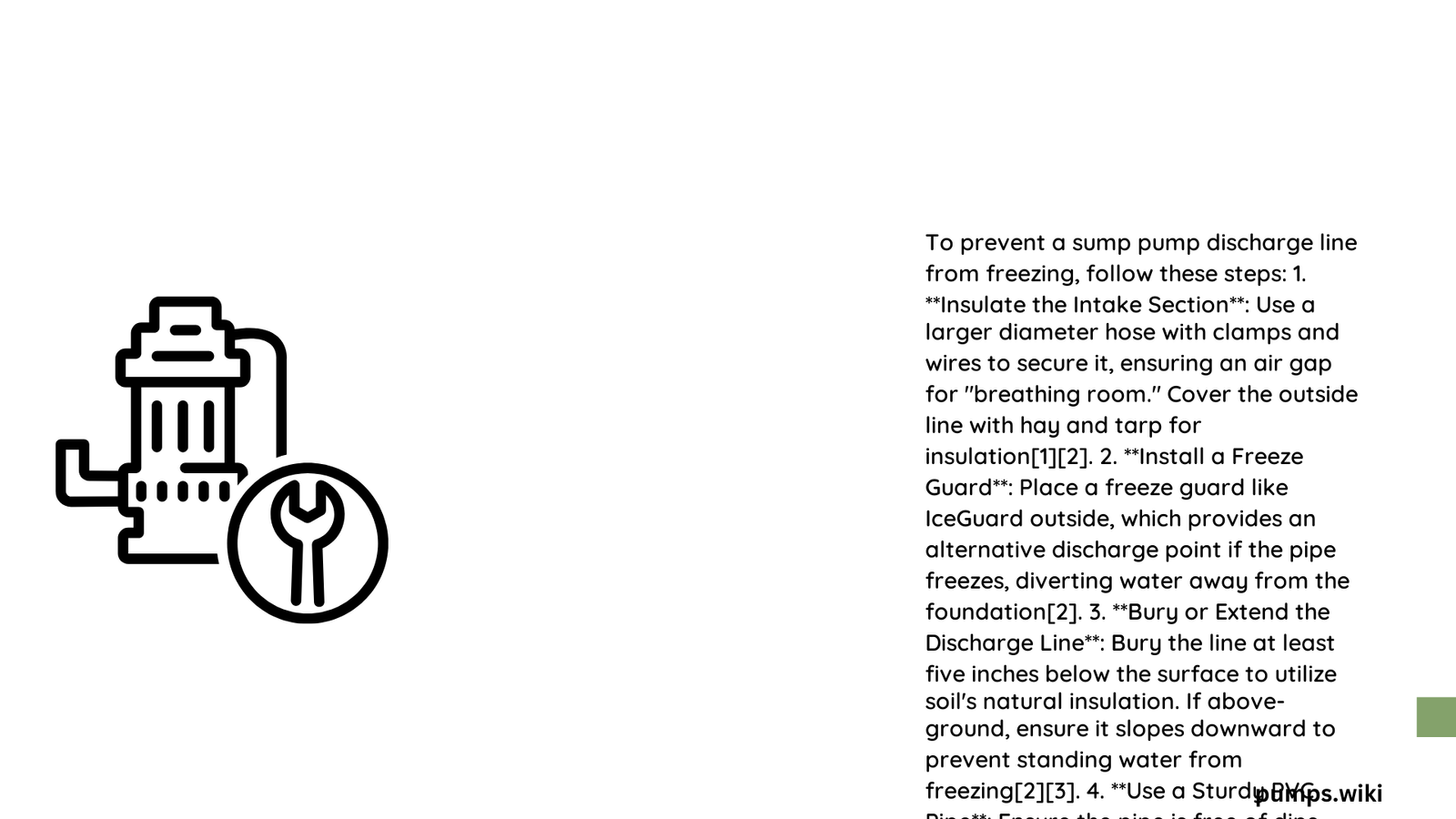Ground freezes can severely compromise sump pump performance, potentially leading to basement flooding and significant property damage. Homeowners in cold climates must implement strategic measures to prevent discharge line freezing, ensure proper installation, and maintain system efficiency during extreme winter conditions. Understanding the complex interactions between ground temperature, water flow, and pump mechanics is crucial for effective water management and home protection.
What Causes Ground Freezes in Sump Pump Systems?
Ground freezes occur when subterranean water and soil temperatures drop below 32°F, creating potential blockages and operational challenges for sump pump discharge lines. Several critical factors contribute to this phenomenon:
Geographical Considerations
- Frost Line Depth: Varies by region
- Average Winter Temperatures
- Soil Composition
| Region | Typical Frost Line | Risk Level |
|---|---|---|
| Northern States | 36-48 inches | High |
| Midwest | 24-36 inches | Moderate |
| Southern States | 6-12 inches | Low |
How to Prevent Discharge Line Freezing?

Pipe Insulation Techniques
- Buried Discharge Strategy
- Bury discharge lines below frost line
- Minimum recommended depth: 36 inches
-
Use schedule 40 PVC piping
-
Insulation Materials
- Foam pipe insulation
- Heat tape
- Electrical heating cables
- Straw wrapping
Advanced Protection Methods
- Install check valves to prevent backflow
- Use larger diameter pipes for improved drainage
- Create slope for water evacuation
- Implement automatic drain mechanisms
What Are the Best Installation Practices?
Sump Pit Preparation
- Select lowest basement point
- Dig 18-22 inch diameter pit
- Add 6-inch gravel base
- Use quick-set concrete for stabilization
Discharge Line Configuration
- Angle pipes away from foundation
- Ensure 10-20 feet distance from house
- Grade pipes for optimal water flow
- Use smooth, continuous piping
How to Diagnose Freezing Issues?
Troubleshooting Checklist
- Inspect discharge line regularly
- Check for ice formation
- Measure water evacuation rates
- Test float switch functionality
- Verify motor performance
Diagnostic Tools
- Infrared thermometer
- Multimeter
- Pipe inspection camera
- Pressure testing equipment
Maintenance Recommendations
Seasonal Preparation
- Conduct pre-winter system inspection
- Clean discharge lines
- Test pump functionality
- Replace worn components
- Apply protective insulation
Emergency Preparedness
- Keep backup power source
- Maintain emergency drainage alternatives
- Create winter maintenance schedule
Cost-Effective Solutions
Investment Considerations
- Average sump pump replacement: $500-$1,000
- Potential water damage prevention: $10,000-$50,000
- Insulation materials: $50-$200
- Professional installation: $300-$600
Technical Specifications
Performance Metrics
- Typical flow rates: 20-50 GPM
- Energy consumption: 400-800 watts
- Operational temperature range: 33-75°F
Conclusion
Protecting sump pumps during ground freezes requires proactive planning, strategic installation, and consistent maintenance. By understanding regional challenges and implementing comprehensive protection strategies, homeowners can effectively mitigate water damage risks.
